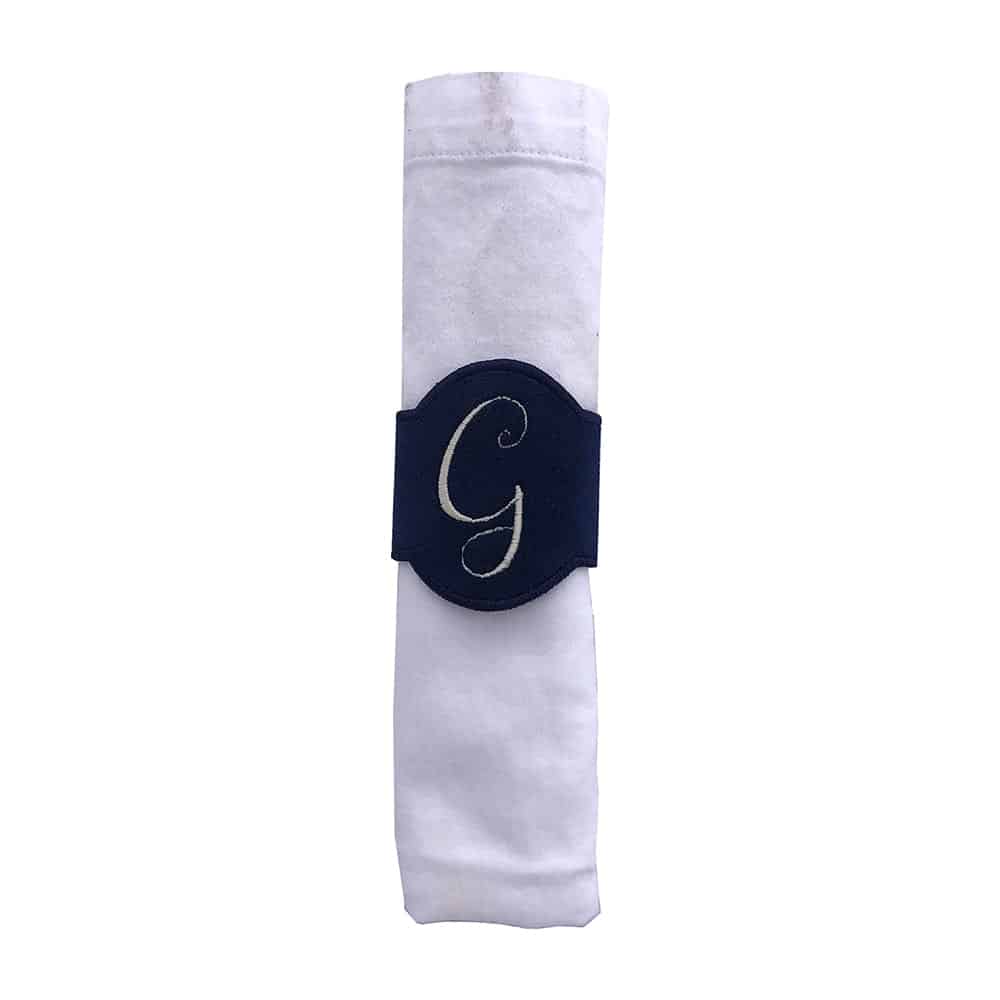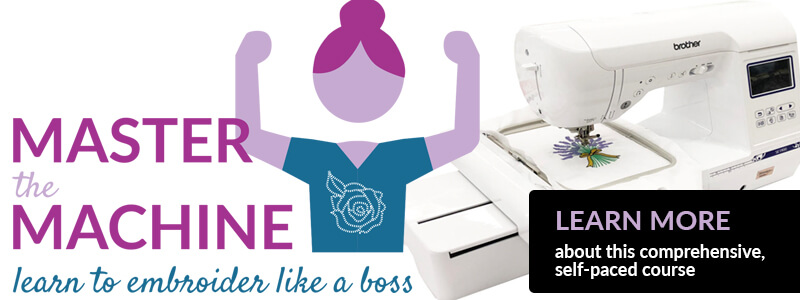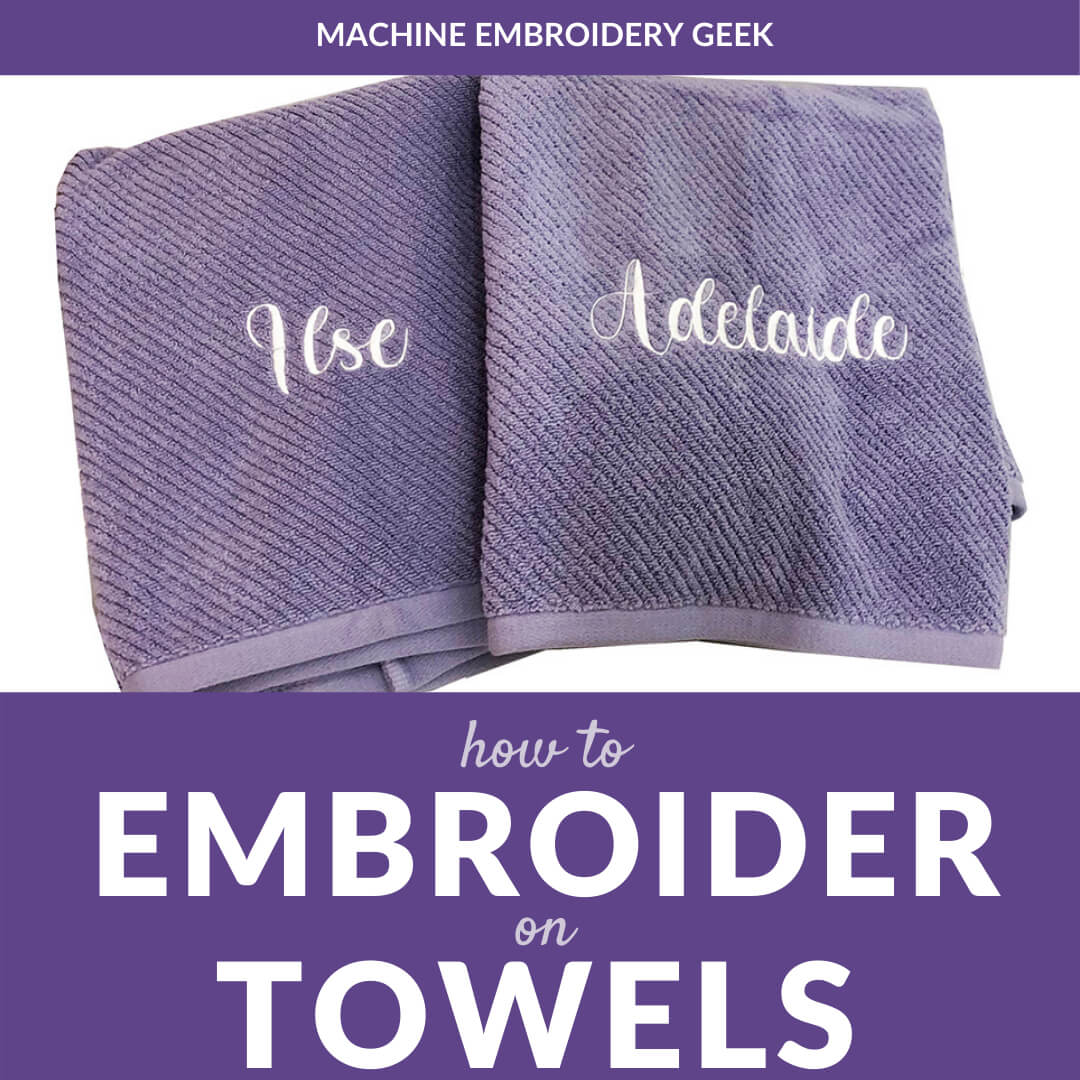Best machine embroidery projects for beginners
This site contains affiliate links to products. We may receive a commission for purchases made through these links.

Getting started with machine embroidery can be a little bit intimidating. First, you need to make the time to actually get your machine out of its box and set it up, but then you need to decide what exactly to make. You don’t want to take on anything too complicated – as a failure at this point might keep you away from that embroidery machine forever. So what are some of the best machine embroidery projects for beginners?
Products mentioned in this post
- Kitchen towels
- Silly embroidery designs specifically for kitchen towels
- Holiday embroidery designs specifically for kitchen towels
- Linen hand towels
- Elegant single initial monogram perfect for linen hand towels
- Roman wreath single initial monogram design
- Pillow shams with pom pom trim
- Inexpensive men’s shirt perfect for monogramming cuffs
- Floppy straw hats
- Inexpensive PDF pattern for tote bags
- Burp cloths
- Bibs
What makes a good beginner machine embroidery project?
Obviously a an ideal project to make on an embroidery machine for a beginner is one that is simple. But, there are also a few other factors that make certain projects more suitable for someone just getting started. Other qualities that make a project beginner-friendly include:
1) a project where fabric doesn’t stretch a lot
Of course it is possible to machine embroider on stretchy fabrics. If you don’t believe me, check out my recent post about the embroidery I added to a swimsuit. However, stretchy fabric adds another layer of complexity that you probably don’t want to encounter in your first outing with your embroidery machine.
2) a project that doesn’t use too many thread colors
Hey – you are a beginner! And, if you were working with a single needle embroidery machine, multiple thread colors mean multiple thread changes. It also means you need to own a lot of thread colors – which you probably don’t if you are a newbie. So, stick with projects that can be done with a limited thread color palette.
3) a project in an area that’s not hard to access
Certain tasks like embroidering on onesies can be a bit of a challenge as the area on which you are trying to embroider on is quite small and it’s difficult to access because the openings of the garment are little as well. Keeping the excess fabric out of the way while you’re embroidering can be a bit of a challenge, so I would wait to try this after you get a bit more comfortable with your embroidery machine
4) a project that’s not expensive
Why take the chance? Your first few outings with your embroidery machine are not a good time to try monogramming that expensive handbag. Start by stitching out designs on inexpensive fabric or on items you don’t care too much about.
Best embroidery projects for beginners
So with these factors in mind, what are some good projects to take on when you are new to your embroidery machine?
1) Embroidered kitchen towels

Kitchen towels are one of the best machine embroidery projects for beginners. They lay nice and flat and you can buy them very cheaply. And, if you buy a type with no pile, (meaning a smooth finish as opposed to a terrycloth towel), you can probably get away without even using a water soluble topper.
There are tons of silly and even seasonal embroidery designs perfect for stitching out on kitchen towels. And who doesn’t need fresh kitchen towels from time to time? Plus – they make awesome host or hostess gifts.
2) Monogrammed hand towels

If you are interested in whipping up a little bit of a fancier towel consider monogramming some linen hand towels. Linen handles really aren’t that expensive. And, if you stitch out a fancy monogram or a single initial wreath design on them, they look like a million bucks.
Like kitchen towels, they’re going to lie nice and flat on your embroidery hoop. And, you only need one colored thread to stitch out a very attractive design.
3) Monogram pillow shams

Pillow shams are another beginner-friendly machine embroidery project that will also enhance your home decor.
And, they are even easier to embroider if you make the pillow shams yourself.
I still really love the set of pillow shams with the roman wreath monograms that I made for my guest room bed, and they cost me literally next to nothing. The shams are made from remnants and the monogram was super easy to stitch out because I monogrammed the fronts of the shams before I assembled them together.
If you don’t want to make your own pillow shams, you can buy premade ones. The only challenge is that the front might be a little bit harder to access with the sham all stitched together.
4) Monogrammed men’s shirt cuffs

The only thing tricky about this project is figuring out exactly where to place the monogram on the cuff. However, I did the hard work for you, and have shown you exactly where to stitch the monogram on the cuff and how large to make it.
Yes, I realize that a man’s shirt might be a little bit on the pricey side when there is a risk ruining it. Therefore, I would suggest that you experiment on a less expensive men’s shirt. But, because many mens shirts are made of a tightly woven cotton, if you really screw up, you probably can remove the stitching and start over without damaging the shirt.
5) Monogrammed scarf

Once again, a scarf is an item that lays nice and flat. I made a super cute monogrammed infinity scarf for my mother-in-law and the fabric cost less than five dollars. Flannel fabric doesn’t move around or stretch, so it was a delight to monogram.
And, even though the cost of this project was super cheap, the resulting infinity scarf looked very expensive once I sewed it all back together.
6) Monogrammed straw hat

I know this sounds a little bit scary, but monogramming a big floppy straw hat is actually pretty easy. The reason? The wide brim makes the monogram area very accessible. Plus – if you are just adding a monogram – you only really need one color thread. And, finally, floppy straw hats are cheap. If you mess it up – you are not out much!
If you are feeling particularly ambitious, you can actually make your own floppy hat – which will make it even easier to embroider on since you can add the embroidery before putting it together.
7) Made over thrift clothing

If you are charmed by a makeover and want to get some practice using your embroidery machine – consider hitting the thrift store – or maybe even your own closet.
I love taking a tired item of clothing and adding some embroidery or appliqué to give it a completely new look. It’s a fun way to create a completely custom piece of clothing while learning how to appliqué using your embroidery machine. Plus – if you mess it up – you probably only spent a few dollars on it at Goodwill – or it was on the way there.
8) Tote bag and simple luggage (make your own)

Tote bags can be a bit tricky to get onto an embroidery hoop. That’s why I wouldn’t suggest embroidering a design or adding a monogram to one for someone who is new to their embroidery machine.
However, tote bags (and other types of simple pieces of luggage – like the monogrammed duffel I made for my friend) are super easy to make yourself. You will likely be tempted once you discover some of the really great + inexpensive PDF patterns for tote bags. And, once again, if you make it yourself, you avoid access issues.
9) In the hoop items

I spent many years using my embroidery machine before ever attempting an in-the-hoop project. In retrospect, I think this is just silly. There are a lot of simple in-the-hoop projects that are perfect for a beginner.
For example, it doesn’t get much easier than making this in-the-hoop napkin ring – even a newbie could crank out an elegant set.
10) Personalized baby accessories

Items like burp cloths and bibs are CHEAP! And they are so much more meaningful when you gift them with an embroidery design and/or a name. Plus, unlike those little stinkin’ onesies – they lie flat on your machine. (Save the onesie project until your feeling a bit more confident with your embroidery machine).
So – are you ready to get stitching?
Knock out of a few of these beginner projects and you’ll be a pro in no time.
Enjoy! And happy stitching
xo
Julie
Want to remember this? Save “Best Machine Embroidery Projects for Beginners” on your favorite Pinterest board.



















